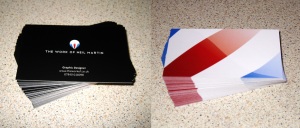
So, you have a fantastic idea for a logo and you start looking for a designer to help you with it. The designer delivers you a fantastic logo and…then what? Where do you use that logo? How does your logo tie in with whatever it is you’re selling to your customers? How do people know that it’s you that’s selling that product and not your competitor?
This is the difference between designing a logo and designing a brand.
But why do you need branding? If you stick your logo on that flyer you’ve been dreaming of and make it nice and big, that should be enough to attract people, right? Not quite.
Let’s think of that flyer as Level 1. At Level 1, no one knows who you are, what you sell or why they should trust you. At Level 1, you’re beginning your journey into convincing people that they should buy from you.
Now let’s think about Level 2 – A level where you should be able to target the same audience that remembers your business and/or the products you sell. In this example, we’re still only using a logo with no branding. Let’s say you send out a second flyer a month later. At that point, your audience from Level 1 have forgotten about your first flyer and you’re essentially repeating the the Level 1 process. You gain no extra visibility and recognition, despite spending money on a second flyer.

Let’s add a level of branding to these flyers. Let’s redesign the Level 1 flyer with the same colours as the logo and use elements of the logo to influence the overall flyer design. At this stage, we’re at the same level of brand recognition as we were before, but we’re setting up the elements for when we want to start thinking about advancing to Level 2.
At Level 2, we send out our second flyer a month later. This time, we’ve got a whole range of complimentary colours and design elements to choose from to advertise our products. In the first example of Level 2, we lost our brand recognition because our flyer had nothing on it that was recognisable from Level 1. This time, we’ve got some memorable visuals, allowing people to think back to our Level 1 flyer and link them together. By doing this, you’ve just improved your customer relationship because they already know who you are and what you do.

Brand consistency helps your business retain a lot of value when you commit to repeat marketing. It helps establish who you are and what you do without necessarily saying all of that every time you produce marketing.
So, the next time you’re thinking of developing a logo, think about developing your brand too and your marketing will have much more chance of success.





